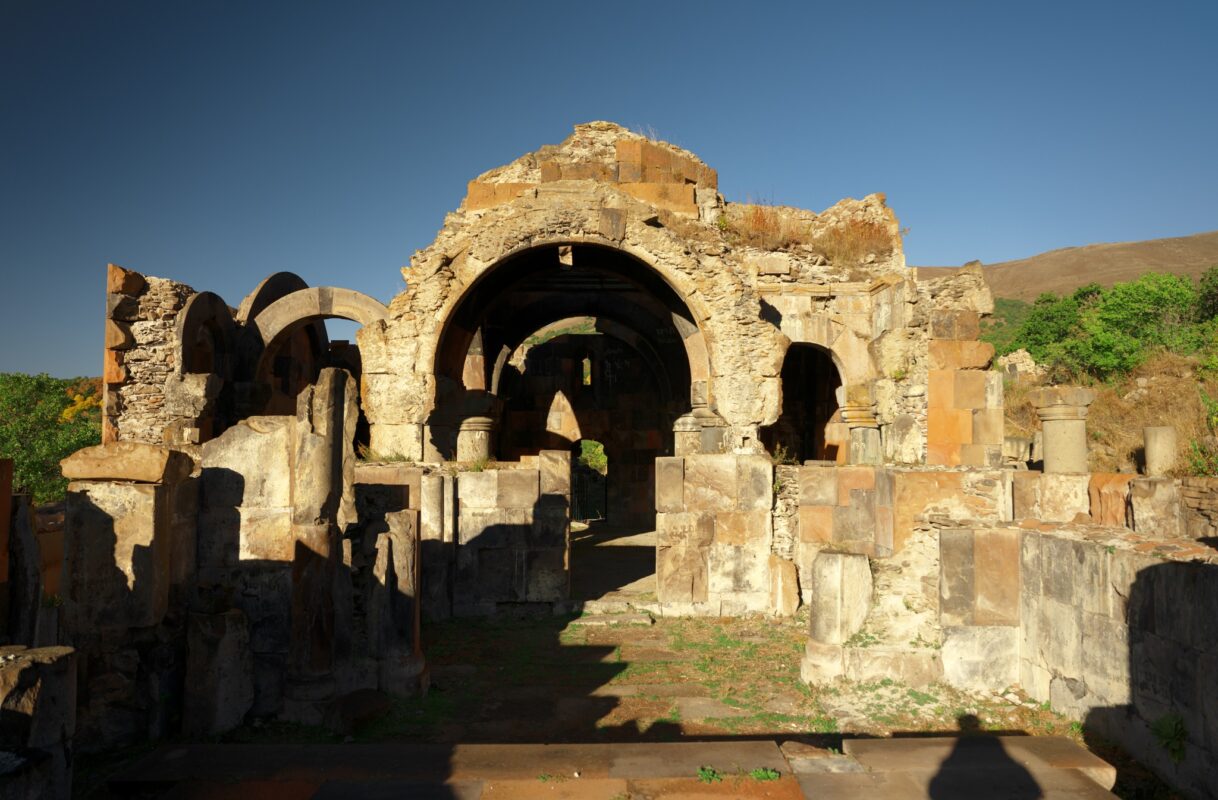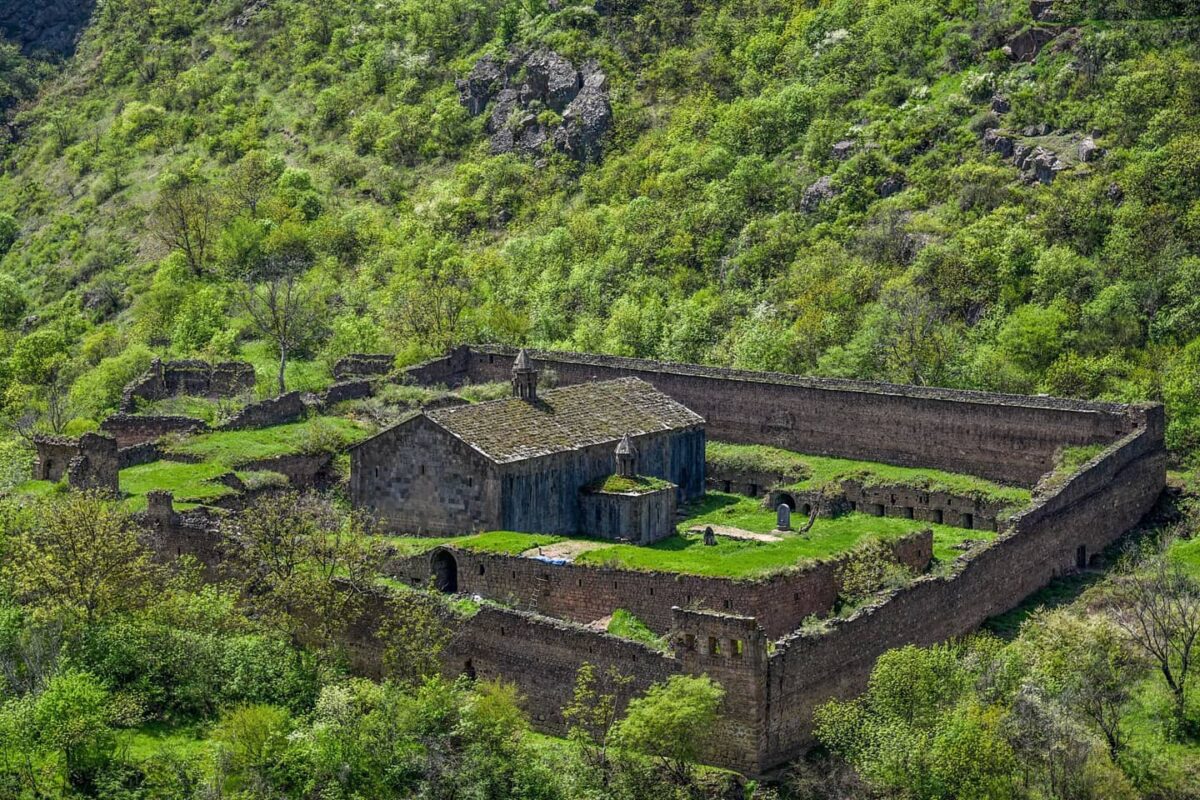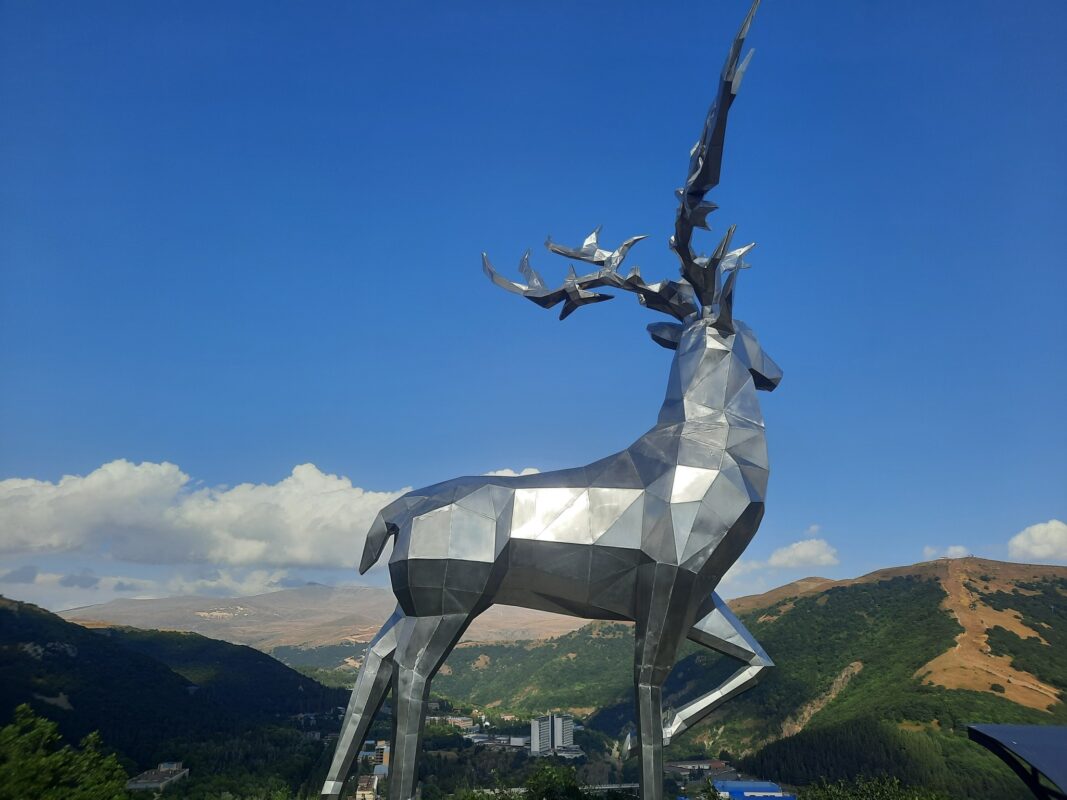Latest Listings
Related Listings
Close To You
Gyumri City

City
1550 m
Cultural
Easy
Area: approximately 4,429 hectares
Population: around 118,000 people (as of 2025)
Accessibility: about 126 km from Yerevan; accessible by car, public transportation, or train.
Gyumri is the second-largest city in Armenia and the administrative center of the Shirak Province.
Located in the northwestern part of the country, about 126 kilometers north of Yerevan, Gyumri is renowned for its rich history, vibrant culture, and unique architecture. Today, it stands as an important economic, cultural, and educational hub of Armenia.
ETYMOLOGY
During the period of the Kingdom of Urartu, the area of modern-day Gyumri was known as Irdiani, a settlement mentioned in inscriptions from the reign of King Argishti I (8th century BC). Starting form 6 century BC the name Kumayri has been used and over time, due to phonetic changes, the name evolved into Kumri, then Gumri, and finally Gyumri. In 1837, Tsar Nicholas I visited Gyumri to inspect the construction of the fortress, within the grounds of which the Orthodox Church of Saint Alexandra was later built. In 1840, by imperial decree, the city was named Alexandropol in honor of Saint Alexandra the Martyr Queen. From 1924 to 1990, it was known as Leninakan in honor of Vladimir Lenin. Following Armenia’s independence, the name Kumayri was briefly used before the city officially adopted the name Gyumri in 1992.
HISTORY
The history of Gyumri dates back to ancient times. Archaeological excavations conducted during the Soviet period revealed that the area was inhabited as early as the 3rd millennium BC. The settlement is mentioned as Kumayri in inscriptions of the Kingdom of Urartu dating back to the 8th century BC. According to some theories, Kumayri is identified with the cities of Gymnias or Gumnias mentioned by Xenophon in his "Anabasis." After the fall of the Kingdom of Urartu in the second half of the 6th century BC, Kumayri became part of the Achaemenid Empire. Remains of a royal settlement found south of Gyumri, near the village of Beniamin (dating from the 5th to 2nd centuries BC), testify to the Achaemenid influence in the region. Another theory suggests that Kumayri was founded as an urban settlement around 401 BC by Greek colonists. In 331 BC, the territory was incorporated into the Ayrarat province of the Kingdom of Greater Armenia within the Shirak canton. From 190 BC to the 1st century AD, Kumayri was under the rule of the Artaxiad dynasty, and later it was granted to the Kamsarakan noble family during the Arsacid Kingdom of Armenia.
With the establishment of the Bagratid Kingdom of Armenia in 885 AD, the region entered a new period of flourishing, and in the 10th century, Kumayri prospered under the patronage of the Pahlavuni family. In the 13th-14th centuries, Gyumri once again fell under Mongol and Turkic invasions, leading to widespread destruction and partial depopulation.
By the end of the 19th century, when the city was known as Alexandropol, it had become the largest city in Eastern Armenia under Russian rule, surpassing even Yerevan in population. During this period, Gyumri emerged as an important cultural and strategic military center, playing a major role during the Russo-Turkish wars. During Soviet rule, the city was renamed Leninakan and became a major industrial and textile center. Following the collapse of the Soviet Union, the city regained its historical name, Gyumri.
The devastating Spitak earthquake of 1988 and the subsequent political collapse hit the city hard.
Gyumri was divided into two eras - "before" and "after" the earthquake. A significant portion of the population had to leave, while those who stayed faced severe social and economic hardships. Despite these challenges, today Gyumri is experiencing a revival: new constructions rise every day, technological and cultural innovations appear, and a new generation with a modern worldview is shaping the future of the city.
ARCHITECTURE
Gyumri stands out for its unique 19th-century urban Armenian architecture.
Initially, the city’s streets were narrow and winding, with tall, blind walls built of tuff stone, and low houses with thick, windowless walls facing the streets. In 1836, the first official urban plan for Gyumri was approved, and the city was classified among fortress cities.
During the second half of the 19th century, Alexandropol (modern Gyumri) was reconstructed according to a regular grid pattern, characteristic of Russian imperial urban planning, with streets intersecting in triangular schemes. The streets became flatter and longer, and a railway connection was established with Tiflis, Yerevan, and Kars, greatly boosting the city’s economic and cultural development.
The urban layout was based on a network of streets stretching north-south and east-west, dividing the city into large (100 × 150 meters) and small (50 × 75 meters) blocks. Residential buildings were primarily one- or two-story structures built from black and red polished tuff stone, creating the city's unique architectural character. Among traditional types of residential architecture in Gyumri are semi-subterranean houses and homes with enclosed courtyards. Notable examples include the old house of the Dzitoghtsyan family (built in 1829) and the house of clockmaker Mugsi Avo in the Dzor Boghaz district.
Even during later reconstructions, the main principles of the original city plan were preserved.
The main public center was the Market Square, which today is known as Vardanants Square, one of the key gathering places in modern Gyumri. Despite devastating earthquakes, Gyumri has managed to preserve its distinct architectural identity, remaining one of the few authentic examples of 19th-century Armenian urban architecture.
CULTURE
Gyumri is considered Armenia’s cultural capital, with its many museums, theaters, and deep-rooted musical traditions. The city is home to several notable museums, including the History museum of Gyumri, Mher Mkrtchyan House-Museum, the Avetik Isahakyan House-Museum, the Hovhannes Shiraz House-Museum, the Sergey Merkurov House-Museum, the Dzitoghtsyan Museum of National Architecture and Urban Life, and the Aslamazyan Sisters Gallery.
Theater life in Gyumri began in the mid-19th century. It was in Gyumri that Armenia’s first opera performance took place in 1912, when Armen Tigranyan's opera Anush was staged. Today, Gyumri is home to the Vardan Ajemian State Drama Theatre and several other cultural institutions.
Gyumri has played a major role in the development of Armenian folk music, particularly through the works of gusan Jivani and Sheram. The city has also produced modern musical groups such as "Bambir," and hosts the annual international "Renaissance" music festival.
In 1876, G. Sanoyan founded the city's first printing house, where Avetik Isahakyan's first book was published. In 1892, the "Ayg" printing house was established, publishing historical books and Gyumri's first local periodical, "Akhuryan."
ECONOMY
Gyumri was already a developed economic center by the early 20th century. In 1902, the city's first bank was opened. By the time Armenia was Sovietized in 1920, Alexandropol (modern Gyumri) had 31 manufacturing enterprises, including breweries, soap factories, and textile workshops.
Historically, Gyumri (formerly Alexandropol) was a city of craftsmen and small-scale merchants. Craftsmen’s guilds and workshops were organized according to professions and were mainly located on specific streets or market areas. Тhe city's neighborhoods developed gradually following traditional construction principles, and were given names reflecting the ethnic makeup or professions of the residents, such as Dzor Boghaz (Farmers' Quarter), the Catholic Quarter (Frankish Quarter), the Russian Quarter (Slobodka), the Turkish Quarter, and Boshi Mayla. (Note: "Mayla" is a localized, altered form of the Persian word "Mahalla," meaning "neighborhood.")
During the Soviet era, Gyumri became one of Armenia’s major industrial and textile production centers. Today, the city continues to develop, especially in the fields of information technology, small business, and tourism.
TRANSPORT AND COMMUNICATION
Gyumri has a well-developed transport infrastructure, connecting the city to different regions of Armenia and to Georgia. The city is served by Gyumri International Airport (Shirak Airport), which mainly handles international flights. Gyumri is also connected to other cities via the South Caucasus Railway, providing both passenger and freight transportation between Yerevan and Georgia. The city has a well-organized road network and offers various options for local and intercity transportation.
TOURISM
Gyumri is becoming increasingly attractive to tourists thanks to its rich historical, cultural, and artistic heritage. Visitors can explore the historic Kumayri district, enjoy the city’s unique atmosphere, and attend local fairs and festivals.
The city offers a range of remarkable sites where history, architecture, and culture blend seamlessly:
Kumayri Historic District - The oldest part of Gyumri, home to more than a thousand buildings dating back to the 18th and 19th centuries. It is one of the few places in the world where authentic Armenian urban architecture has been preserved.
Sev Berd (Black Fortress) - A Russian imperial fortress built between 1834 and 1847. Today, it serves as an arts and cultural center.
Mother Armenia Monument - Erected in 1975, symbolizing the strength and pride of Armenia.
Vardanants Square - The central square of Gyumri, featuring monuments and vibrant city life.
Independence Square - Dedicated to the independence of Armenia.
Charles Aznavour Square - Named after the renowned French-Armenian singer.
Garegin Nzhdeh Square - Dedicated to the Armenian national hero Garegin Nzhdeh.
Gyumri Central Park - Founded in the 1920s on the site of the old city cemetery.
Statue of Avetik Isahakyan - Located in the heart of the city, honoring the great Armenian poet.
CUISINE
Gyumri’s cuisine is known for its traditional simplicity, rich flavors, and nourishing dishes.
Local families have passed down recipes for generations, emphasizing high-quality, natural ingredients and unique culinary techniques. Even today, walking through the old streets of Gyumri, visitors can taste dishes that have shaped the city’s culinary identity for centuries. Kyalya, Bughlama, Panrkhash, Tava Kyufta, and dozens of other traditional dishes are not just food - they are a living part of Gyumri’s culture.
Main Traditional Dishes of Gyumri:
Kyalya - A traditional dish made from boiled beef or lamb head, served with lemon and greens.
Bughlama - Slow-cooked lamb or beef stewed with vegetables in its own juices without adding extra water.
Panrkhash - A hearty dish made with dried lavash, melted butter, and fried onions, often served with fresh bread.
Tail Soup - A rich soup prepared with beans and pastry pieces and served with garlic or nuts and butter.
Sorrel Soup - A light, slightly sour soup made with sorrel leaves, sometimes enriched with rice or grains.
Arishta - Homemade noodles made from dough, first lightly roasted and then cooked, usually served with matsoon (a traditional Armenian yogurt drink).
Chanagh - A traditional dish cooked in a clay pot with ox tail, tomatoes, beans, peas, and potatoes.
Chilbur - A dish made with millet, eggs, and onions, flavored with mint and garlic.
Yaghli - A traditional sweet pastry made from special layered dough and sprinkled with powdered sugar.
These traditional dishes continue to preserve the rich and authentic flavors of Gyumri’s old kitchen.
Read more about Alexandrapol here:
1. Alexandrapol - Armen Hayrapetyan
2. Alexandrapol - Karine Bazeyan, Grigor Aghayan
Facilities
Nearby
The oldest part of Gyumri, home to more than a thousand historic buildings from the 18th-19th centuries. One of the few places in the world where authentic Armenian urban architecture has been preserved.
A Russian imperial fortress built between 1834 and 1847 after the Russo-Turkish War. Today, it serves as a cultural and art center.
A 19th-century Armenian church dedicated to the Holy Mother of God. One of Gyumri’s most beloved spiritual sites.
A medieval monastic complex dating back to the 10th-11th centuries, built by Prince Grigor Magistros. The monastery is surrounded by beautiful natural landscapes.
A late 19th-century architectural gem belonging to the Dzitoghtsyan family. Today, the museum showcases the social life and traditions of old Gyumri.























